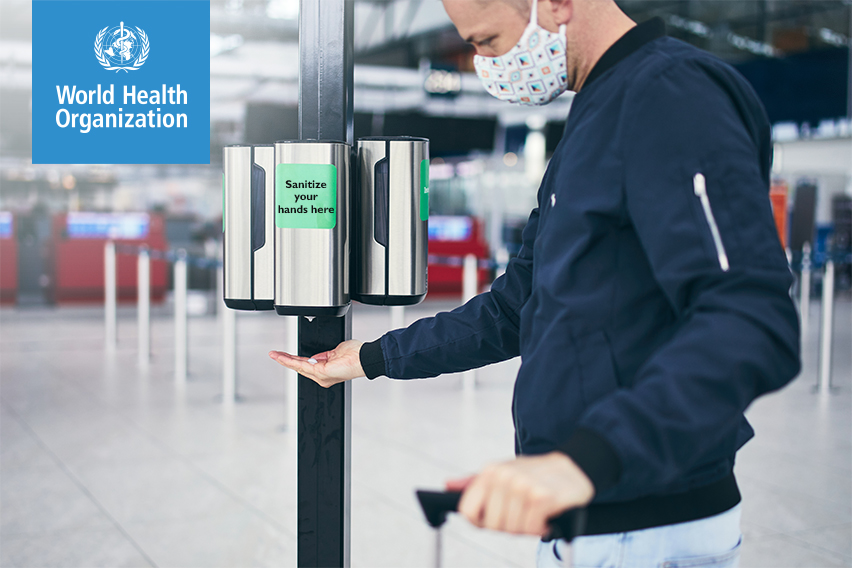WHO recommends Hand Sanitizer Stations in Public Areas
Until the COVID-19 outbreak, there are so many people among us who cared least about hand hygiene. As per the study, 1 out of 10 people do not wash their hands after using the restroom and there will be many who do not wash their hands after petting an animal or when coming home from outside. But currently, one of the key COVID-19 solutions is that we need to take acute hand hygiene measures and maintain social distancing. According to the WHO research, 80% of all infectious diseases are transmitted through hands, and in this pandemic situation, hand hygiene has been a serious topic of discussion.
Given the fact highlights the importance of proper hand hygiene infrastructure. On a regular day before the pandemic, we usually spent over 10 hours outside our home. That might include our workspace, grocery shopping, meeting friends for coffee, visiting movie theatres, etc. In all these places, we come in contact with commonly touch objects such as door handles, rails, tables, chair backs, etc. which can be a source for the virus. Now, even after the lockdown is completely lifted, we need to be extra careful with our hand hygiene.
Though many countries are slowly easing down the restrictions due to COVID-19 the virus is still out there. That is why WHO recommends some precautions as the lockdown is being uplifted that aims at improving hygiene access in public areas. As per World Health Organization (WHO), all public structures such as offices, healthcare facilities, and schools/colleges, etc. must include hand sanitizer stations at their entrances and all high touch surfaces in the area.
Hand Hygiene – A Key Preventative Measure
With the whole world striving for COVID-19 solutions, hand hygiene has played a vital role in the fight against the virus. The coronavirus is transmitted either through direct contact or respiratory droplets. It can also be transferred through indirect contact when one touches a contaminated surface by hands. Therefore, the World Health Organization claims that practicing thorough hand hygiene with the help of soap or sanitizer stations can interrupt the transmission of coronavirus and is essential to keep everyone safe in the outside world.
Though the importance of hand hygiene has increased due to the pandemic, there are still several public and health care facilities that struggle to provide sufficient hand sanitizer stations across the area. WHO suggests that one or a number of hygiene stations should be set up in front of the entrance to the public as well as private commercial buildings. To prevent the spread of the virus, it is essential to encourage people to engage in hand hygiene and the best way to do so is making hand sanitizer stations easily accessible to them.
Hand Hygiene at Healthcare
The WHO strongly recommends the public and private healthcare facilities to strengthen their hand hygiene improvement multimodal programs with some training, and communications emphasizing on the importance of hand hygiene during such circumstances. Functional hand sanitizer stations should be accessible to all healthcare employees, patients, and visitors covering all the high-touch surfaces. Healthcare facilities are one of the areas which are likely to be infected with the virus and proper hand hygiene is a core component to infection prevention in such areas.
Here are some recommendations from the WHO
- Hand sanitizer stations should be placed at transport locations such as bus and train stations, airports, and seaports.
- It should be placed depending on the type and number of users (children, adults, or elderly) which would encourage hygiene and eliminate the waiting time.
- Following hand hygiene whenever one steps outside their private homes should become a part of the everyday routine.
- It is the responsibility of public health authorities and building managers to install, supervise, and do regular refilling of the equipment.
- Local health authorities should make sure hand sanitizer stations in areas where PPE (personal protective equipment) is being put on or taken off and where the waste is handled.
To know more about the recommendations, CLICK HERE
As we move ahead with this pandemic, it is important to change the way we use public spaces while considering our safety and the safety of others. And having COVID-19 safety supplies at public spaces not only will encourage safety but also reduce the risk of spreading COVID-19. That is why the World Health Organization strongly recommends improving access to hand hygiene facilities in public areas.




